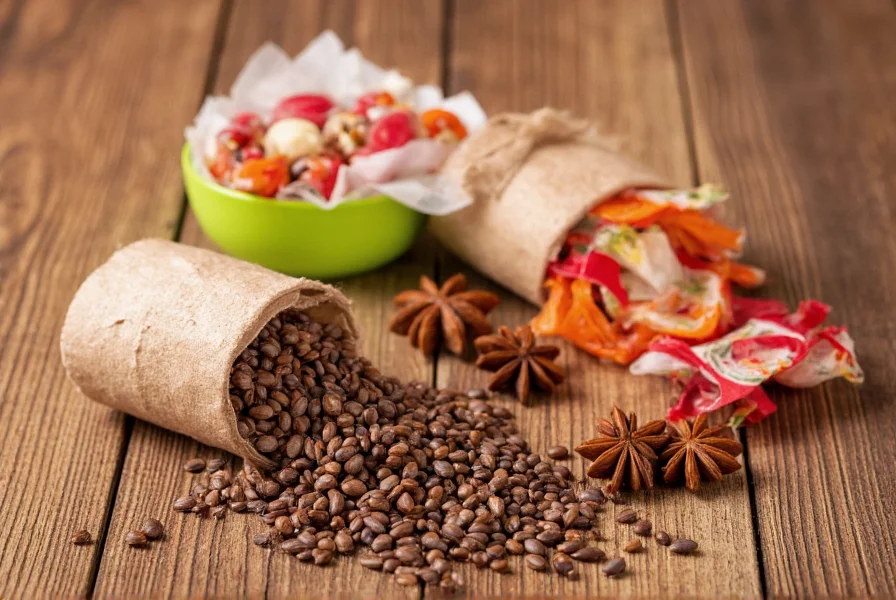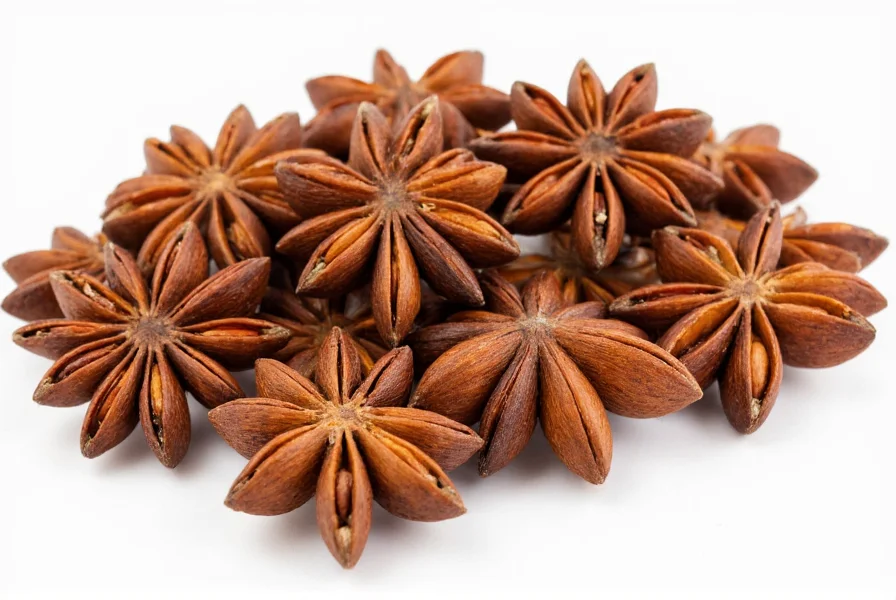Candy anise represents one of the world's oldest flavor combinations in confectionery. This distinctive treat delivers a sweet yet complex licorice-like flavor profile derived from aniseed, the fruit of the Pimpinella anisum plant. Unlike artificial licorice candies, authentic candy anise uses natural anise oil extracted from these small, aromatic seeds.

Historical Origins of Anise-Flavored Sweets
Historical records show ancient Egyptians incorporating anise into early confections around 1500 BCE. Roman soldiers carried aniseed candies during military campaigns for digestive benefits. By the Middle Ages, European apothecaries sold anise drops as medicinal remedies for upset stomachs and respiratory issues. The transition from medicine to mainstream candy occurred during the 18th century when sugar became more widely available.
Traditional Production Methods
Authentic candy anise production follows time-honored techniques that preserve the delicate anise flavor. Traditional methods involve:
| Production Method | Key Characteristics | Regional Variations |
|---|---|---|
| Hard Candy Process | Boiled sugar syrup with anise oil added at 280°F | Italy: Clear crystal candies; Spain: Amber-hued drops |
| Chewy Drop Method | Gelatin or gum arabic base with precise oil measurement | Mexico: Dulces de anís; Middle East: Soft pastilles |
| Traditional Pastille | Slow-cooked sugar syrup with natural aniseed infusion | France: Pastilles d'anis; Netherlands: Drop |
Modern candy manufacturers maintain these traditional approaches while implementing quality control measures to ensure consistent flavor intensity. The critical factor remains the timing of anise oil addition during the cooking process, as excessive heat degrades the delicate flavor compounds.
Global Varieties of Candy Anise
Cultural adaptations have created distinctive regional interpretations of this classic flavor:
- Italian Anisette Drops - Clear, crystal-hard candies often served with coffee
- Spanish Anís Lluís - Amber-colored drops with subtle orange notes
- Mexican Dulces de Anís - Chewy squares sometimes combined with chili
- Dutch Drop - Soft, square pastilles ranging from sweet to salty
- Greek Pasteli me Aniso - Sesame seed bars with anise flavoring
Each variation maintains the essential anise flavor while incorporating local ingredients and preferences. Traditional candy anise recipes often include complementary flavors like orange zest, fennel, or star anise to enhance the primary flavor profile without overpowering it.
Flavor Chemistry and Sensory Experience
The distinctive taste of candy anise comes primarily from anethole, the compound responsible for its characteristic licorice flavor. This natural compound interacts with taste receptors differently than artificial licorice flavoring, creating a more complex sensory experience. Authentic candy anise typically features:
- A sweet initial impression followed by warm, spicy notes
- A cooling sensation similar to mint but less intense
- A clean finish without the bitter aftertaste of artificial versions
- Temperature-dependent flavor release (warmer temperatures intensify the flavor)
Food scientists note that the optimal anise oil concentration ranges between 0.1-0.3% of total candy weight. Higher concentrations create an overwhelming medicinal taste, while lower amounts fail to deliver the distinctive flavor profile that candy enthusiasts expect.
Selecting Quality Candy Anise
When choosing authentic candy anise, consider these quality indicators:
- Ingredient transparency - Look for products listing "anise oil" or "anise extract" rather than "artificial flavor"
- Texture consistency - Properly made hard candy anise should snap cleanly without gumminess
- Aroma intensity - Fresh candy anise emits a strong, pleasant fragrance even before tasting
- Color authenticity - Natural coloring ranges from pale yellow to light amber (avoid unnaturally bright colors)
Traditional candy anise maintains quality for 6-12 months when stored in airtight containers away from light and moisture. Exposure to humidity causes hard candies to become sticky, while temperature fluctuations create condensation that degrades flavor compounds.
Culinary Applications Beyond Snacking
Culinary professionals increasingly incorporate candy anise into sophisticated recipes:
- Melting hard candy anise to create glazes for roasted meats
- Crushing pastilles for cookie and pastry decorations
- Infusing cream with dissolved candy anise for desserts
- Pairing with chocolate in artisan confections
- Creating signature cocktails with dissolved candy anise syrup
The natural sweetness and complex flavor profile make candy anise particularly versatile in culinary applications where artificial licorice flavors would overwhelm other ingredients. Professional chefs recommend starting with small quantities and adjusting to taste, as the flavor intensifies during cooking processes.
Frequently Asked Questions
What's the difference between candy anise and regular licorice candy?
Candy anise uses natural anise oil from Pimpinella anisum seeds, creating a cleaner, sweeter flavor. Regular licorice candy typically contains glycyrrhizin from licorice root, which has a stronger, more medicinal taste and potential health concerns at high consumption levels.
Can people with licorice allergies eat candy anise?
Most people with licorice allergies can safely consume candy anise since they come from different plants. Anise (Pimpinella anisum) belongs to the Apiaceae family, while licorice (Glycyrrhiza glabra) comes from the Fabaceae family. However, individuals with severe allergies should consult their healthcare provider before trying new foods.
How should I store candy anise to maintain freshness?
Store candy anise in an airtight container away from light and moisture at room temperature. Properly stored, hard candy anise maintains quality for 6-12 months. Avoid refrigeration as temperature fluctuations cause condensation that degrades flavor. For long-term storage, keep in a cool, dark pantry with stable temperatures between 60-70°F (15-21°C).
Why does candy anise taste different in various countries?
Regional variations in candy anise stem from different production methods, local ingredient availability, and cultural flavor preferences. European versions often use pure anise oil with minimal additives, while Latin American varieties sometimes include complementary flavors like chili or citrus. The specific anise cultivar used and precise cooking temperatures also contribute to flavor differences across regions.
Is candy anise safe for children to consume?
Candy anise is generally safe for children in moderate amounts. Unlike black licorice containing glycyrrhizin, candy anise doesn't pose the same health risks. However, parents should supervise young children due to choking hazards with hard candies. The American Academy of Pediatrics recommends avoiding hard candies for children under 4 years old. As with any candy, moderation is key in children's diets.











 浙公网安备
33010002000092号
浙公网安备
33010002000092号 浙B2-20120091-4
浙B2-20120091-4